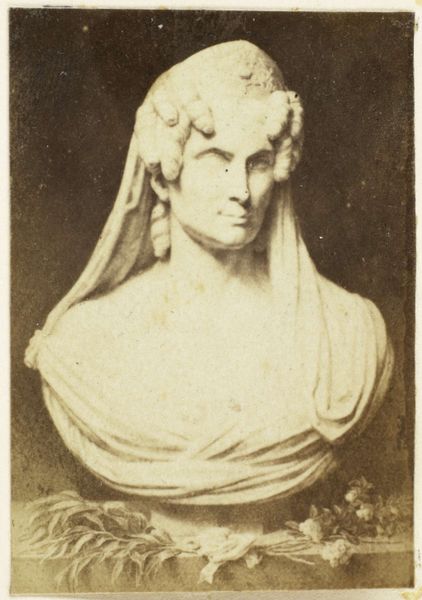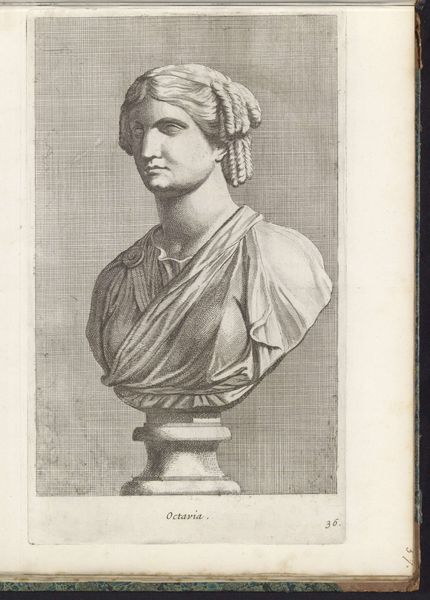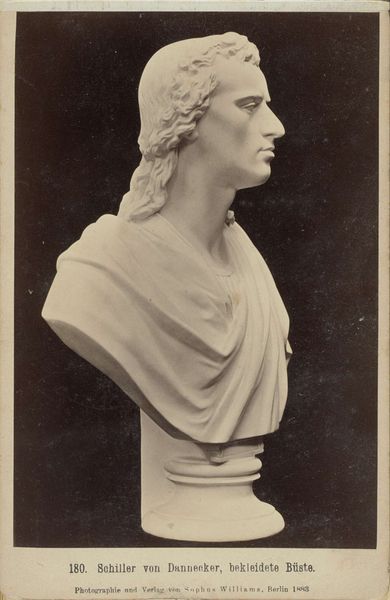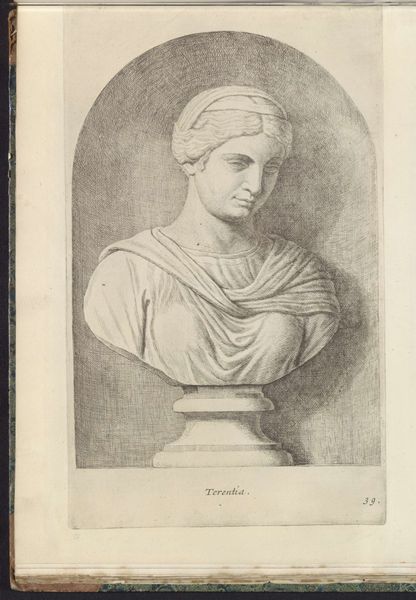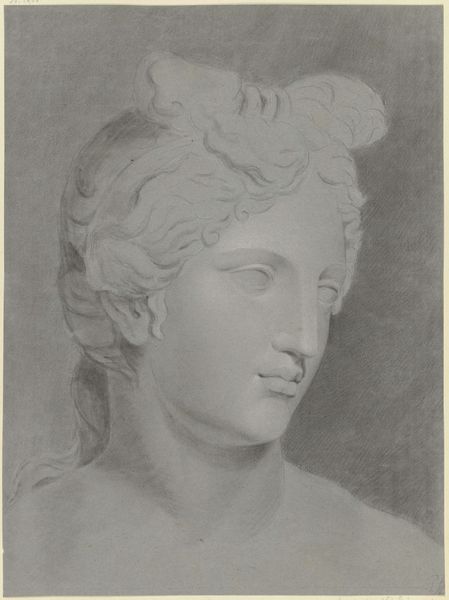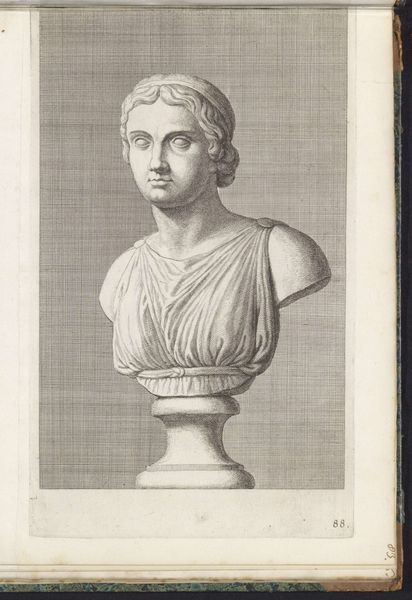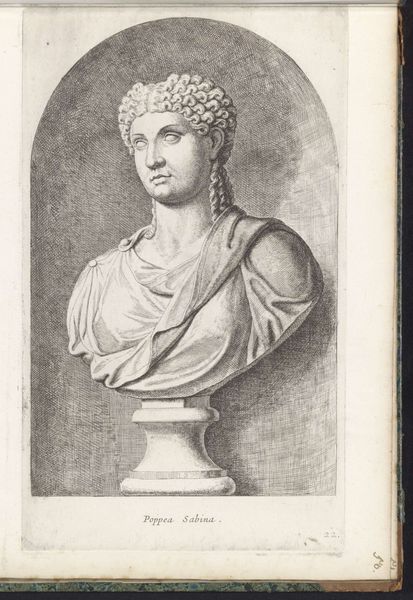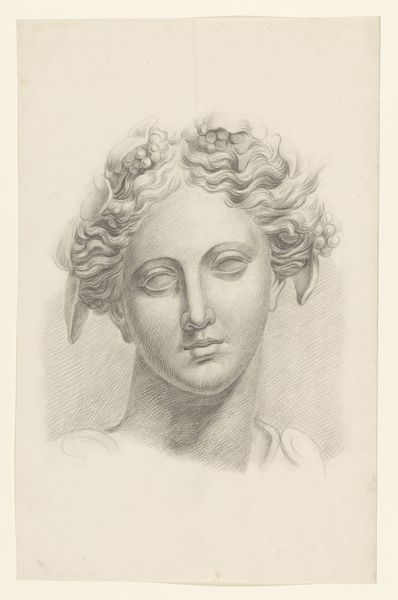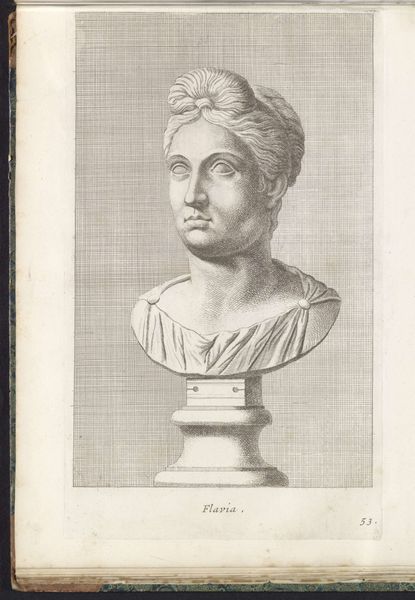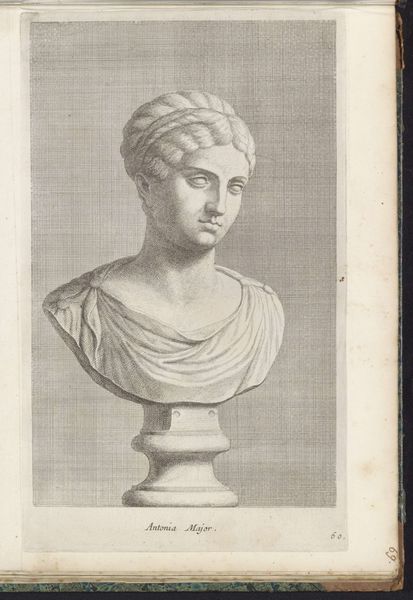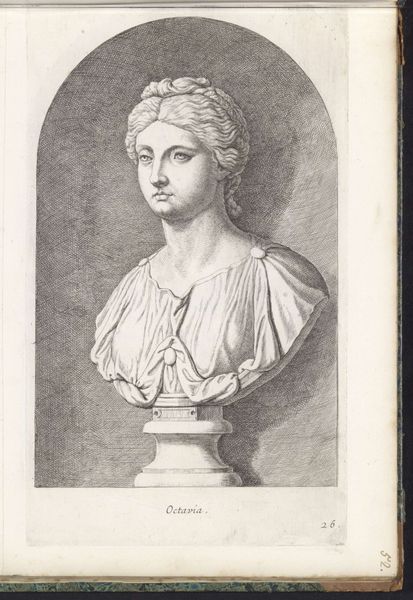
daguerreotype, paper, photography, sculpture, marble
#
portrait
#
neoclacissism
#
daguerreotype
#
paper
#
photography
#
sculpture
#
marble
Dimensions: height 77 mm, width 50 mm
Copyright: Rijks Museum: Open Domain
Curator: Before us is an intriguing daguerreotype from around 1855 by Eduard Isaac Asser. It's a photograph of a marble bust of Wilhelmina of Prussia, located right here at the Rijksmuseum. Editor: My first impression is one of coolness, almost austerity. The monochrome, combined with the marble, gives it this removed, idealized quality. Curator: Absolutely. Neoclassical sculpture often aimed for that idealized form, harking back to antiquity. Notice the details, like the arrangement of her hair. In its replication in a photograph, we see not only the Queen's likeness as imagined by the original sculptor, but the burgeoning techniques of reproducible portraiture. Editor: Right. I wonder about the political context surrounding its creation and circulation. Who was this Wilhelmina to the people who would have seen her image then? And what message does the sculptor convey by linking Wilhelmina to classical symbols of leadership? Curator: Wilhelmina, wife of Prince William V, was a significant political figure. She actually had deep involvement in the turbulent politics of the Dutch Republic towards the end of the 18th century. So the bust, and consequently this image, carries weight—an implicit connection to concepts of civic virtue and enduring legacy. Editor: I am curious, too, about this juxtaposition of a sculpted form with a photographic medium. On one hand, photography has a democratic effect, since more and more people had access to portraits and self-representation, which at once in history, were almost exclusively for wealthy elites. Yet, the picture maintains a neoclassical look. Curator: That tension between accessibility afforded by photography and the continued employment of established visual languages—Neoclassicism here— speaks to how power structures adapted. Even new media are co-opted. The daguerreotype's delicacy contrasts the solidity one might expect of marble sculpture. And, beyond her, the photographic portrait offered opportunities to build her identity as both Royal and Republican symbol. Editor: Looking at it, I appreciate how much a single artwork embodies layers of historical, artistic, and political considerations. Curator: Yes, even what may seem like a straightforward portrait reveals shifting social landscapes.
Comments
No comments
Be the first to comment and join the conversation on the ultimate creative platform.
